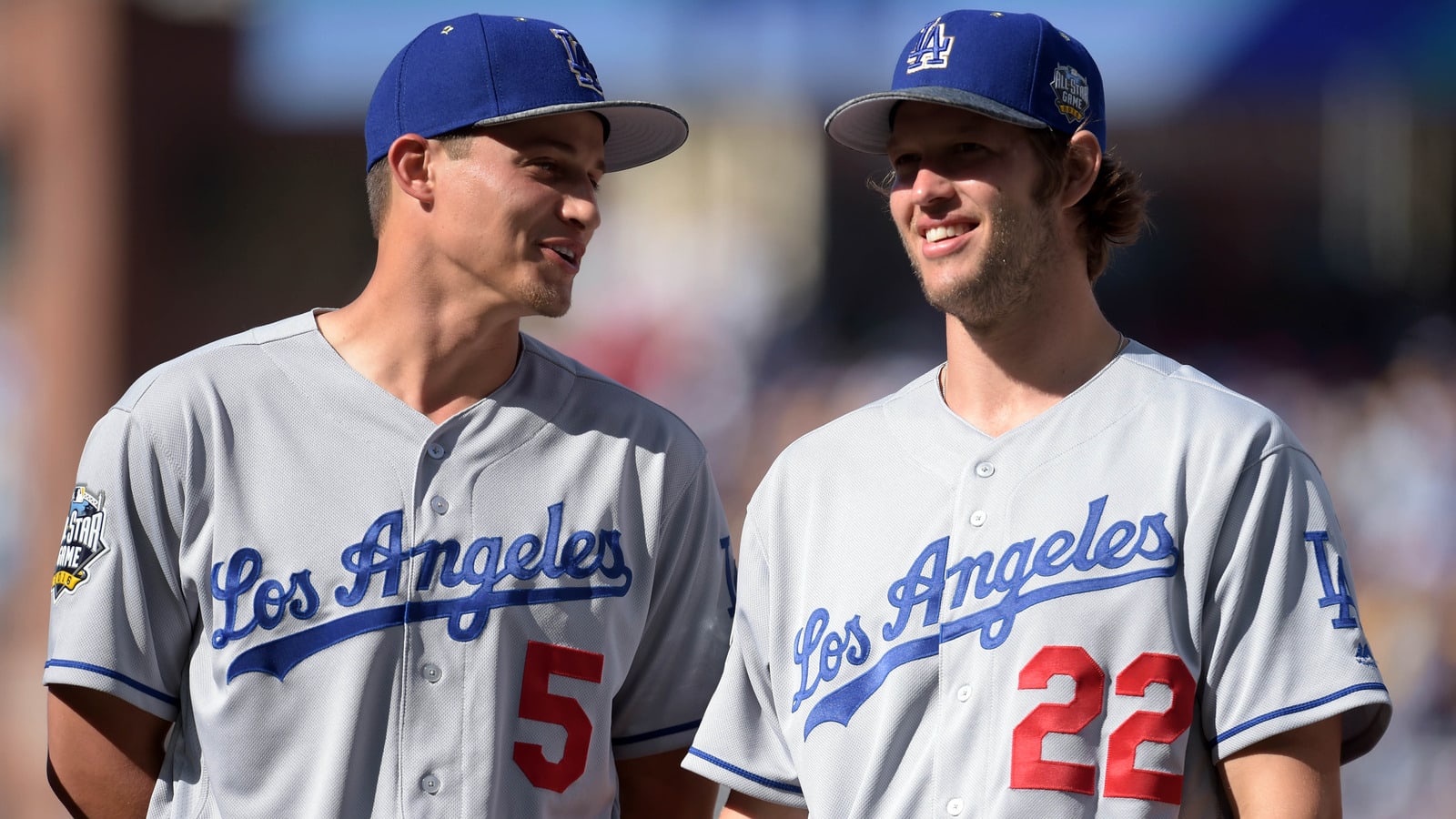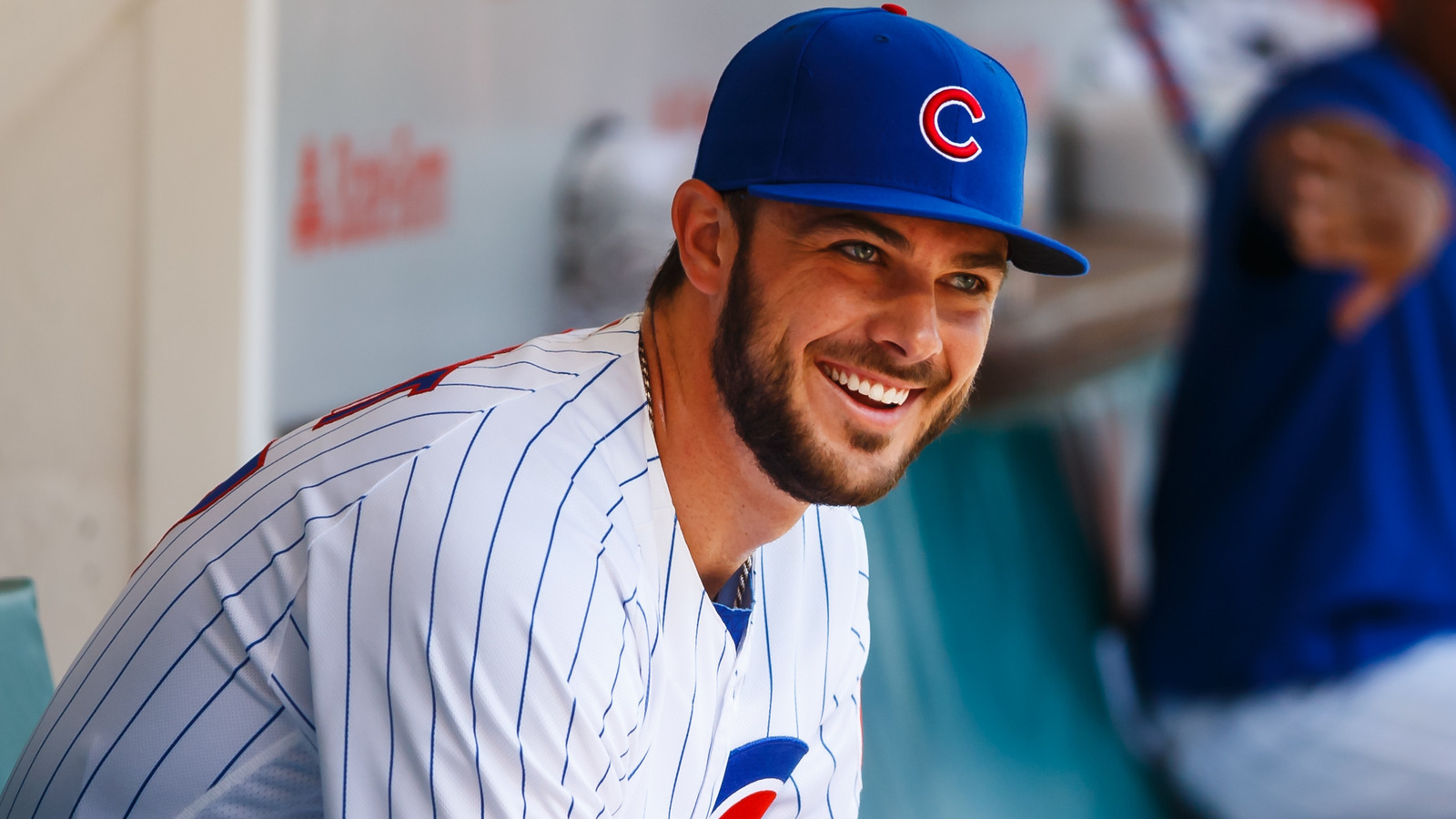
The era of the super team is upon Major League Baseball
The Los Angeles Dodgers are on a collision course with immortality this year, flirting with a pace that could see them reach rarefied air in Major League Baseball history. In the process, they have done more than just become the hottest team of the summer — they have begun to reclassify expectations of what an MLB roster can become.
During a time in professional sports when regular franchises look more like All-Star teams on an everyday basis, the relentless run of the Dodgers through the summer slate is invoking discussion about if they have become baseball’s equivalent to the model of the Golden State Warriors, Cleveland Cavaliers or New England Patriots, among others. With every victory and prolonged winning streak that comes down the pipe, as well as each superstar who either joins or emerges from L.A.'s ranks, the answer trends increasingly toward yes.
But before delving too far down this path, it is important to understand why having a proverbial "super team" in baseball is much different than in any other sport. Unlike in the NBA or NFL, the impact of a team’s very best players happens much less frequently. The nature of player acquisition in baseball makes it much more difficult to accumulate a majority of the league’s best talent on one roster. The dynamics — and price tags — of the sport will not allow this to be done in the same fashion as in the NBA, where less players must be acquired to assure a team’s ascent, or in the NFL, where contracts are more easily escaped. The guaranteed nature of the high-dollar contracts in baseball raises the stakes of the game, and the severe new penalties for exceeding baseball’s informal salary "cap" makes utilization of internal crops a must.
The task of putting together a nearly impenetrable roster is more tedious and involves internal harvesting of talent, as well as a measure collection of external acquisition, intelligent contract retention and, perhaps most importantly, a dash of pure luck.
Because of that, it would be fair to at least begin the conversation about the Dodgers being the MLB’s current equivalent of a super team.
For starters, there are more tiers of stars on the Dodgers than on any other team. There is the established superstar in Clayton Kershaw, as well as a pair of supernovas in the making in Corey Seager and Cody Bellinger. There are also the in-sport stars such as Justin Turner and Kenley Jansen, as well as the unique presence that is Yasiel Puig.
With a fifth straight NL West title a near mathematical formality at this point, the Dodgers' separation from the pack this year gives them the chance to become the next era-guiding team in the game. They have ascended from the ranks of a perennially competitive team to championship front-runner and gone through the ups and downs that come with reaching this point.
Their ascent has been foretold for years, ever since the Guggenheim Group bought the team five years ago. The design was to pour any and all resources into making the Dodgers exactly what they have become, the modern-day model of how to engineer a baseball powerhouse built for the current times. It is an era when building within means as much as aggressive spending, and it is a balance that, after some trial and error, the Dodgers have finally found. Now, the rest of baseball is struggling to endure against it.

While the Dodgers are the toast of the town and rightfully so, it is worth noting that they are not treading through the lands of a "super teamdom" on their own. By all accounts, both the Houston Astros and Chicago Cubs should be considered within the same vein themselves, albeit taking the route of the drastic overhaul, followed by franchise rallies and rebounds to get to their current altitude. Flash back to a few months ago, and the Astros were mowing through the competition, an impenetrable force that had made the regular season simply a formality.
Then jump back slightly farther and see the Cubs as they bulldozed their way through the National League toward their first World Series since the Roosevelt (Theodore, that is) administration. They entered the year as runaway favorites for a repeat and had the look of the next generation-defining club.
All three teams also still have more potential to grow into as well, all guided by youthful cores and roster builds that allow them to be flexible to meet the ever-changing demands of the season as it matures year to year. Simply put, Major League Baseball may very well have three super teams on its hands at once.
What’s more is that nothing has truly changed regarding them either. The Astros are still on pace to reach the same neighborhood as the 103-win season the Cubs posted a year ago, when they won the NL Central by 17 games.
While the inconsistent year that the Cubs have experienced could reasonably bring pause to the notion of them truly being the dominant force it appeared they were as they entered the summer, it is far too early to sell on their stock going ahead. Theo Epstein is still in charge, Kris Bryant is still 25 years old and the Cubs are still on pace to make a return to the postseason this year. They may show up with a few more dents and dings in their armor this time around, but remember, coming off of their breakout World Series run in 1996, the previous dynastic run from the Yankees took a step backward in year two as well. The Yankees finished in second place in the NL East and lost to Cleveland in the ALDS — before coming back a year later, winning 114 games and taking home the second of what would be four titles in a five-year span.
But don’t let consistent regular season dominance tell the whole story. The last team to win 100 games in consecutive seasons was the 2002-2004 team up in the Bronx, and the Yankees failed to win a World Series in any of those seasons.
The moral of the story is don’t sell the Cubs short just yet, and don’t buy too high on the early success in L.A. or Houston either. The grueling 162-game campaign of the MLB slate holds one inevitable truth behind it: Everything is a new when the calendar turns to October.

There have been many teams that have carried the image of the super team model, an incredible collection of talents who should walk through October and take the spoils of victory that it holds. The Bonds/Bonilla/Van Slyke Pirates of the early '90s. The powerful Cleveland Indians of the mid-'90s. The embarrassment of riches that was the Montreal Expos. Both the 2011 Philadelphia Phillies and Boston Red Sox, armed on one hand with a stunning free agent haul in Beantown and a historically potent collection of award-winning arms in Philly. More recently, the Washington Nationals, who have been the paper champs for years on end it seems.
All of these teams looked the part but couldn’t live it. That is due to one unwavering fact: Sustained excellence in baseball — even over the course of a single year — requires high-quality balance over a single dominant part.
That is why the game could potentially have more legitimate super teams at once than it has ever had before. The Dodgers, Cubs and Astros brasses have mastered the art of the balanced roster build. Each team has a pair of superstar talents. The likes of Bryant and Anthony Rizzo lead the way at Wrigley; Clayton Kershaw, Corey Seager and Cody Bellinger in L.A.; and Jose Altuve, Carlos Correa and Dallas Keuchel as the pace-setters in Houston. Beyond them, there is the game’s best complete pitching staff in L.A., a total team with a rare level of athleticism in Houston and the Cubs' understated, dominant pitching staff guiding them to the most elusive World Series title ever a year ago.
It is an exceptional thing to behold. The sport rarely lends itself to multiple potentially dynastic teams at once. The Oakland A’s and the Big Red Machine Cincinnati Reds of the 1970s shared the spotlight with one or the other winning every World Series between 1972 and 1975. Likewise in the 1990s, the Braves built a National League dynasty, while the New York Yankees formed as the first legitimate crossover dynasty the game had seen since arguably the 1950s, when Mickey Mantle, Whitey Ford and Yogi Berra pulled the same feat off in the Bronx in a much simpler era to do so.
But by and large, parity defines the competitive face of Major League Baseball, and it is a face that the current Dodgers, Cubs and Astros are collectively preparing to spit in. Every other team in baseball has tried to keep up the pace with each of these clubs over the last year, and while the effort to make up ground could be taken on at a sprinter’s pace, the reality is it could take a marathon distance to achieve. Each team is built around a young, homegrown core that has been amplified by the presence of external acquisitions (such as Yu Darvish, Aroldis Chapman and the smattering of veterans the Astros acquired headed into the season). The bit parts can easily be replaced regularly as these teams pay the princely sums to hold on to their young cornerstones as they mature into talents that rake in hundreds of millions of dollars over their primes. Look no further than what is already in place with Kershaw to see how the model works: Zack Greinke begot a handful of middl- tier arms, who ultimately begot Yu Darvish, who will likely beget a replacement of his own within the Dodgers machine after this year wraps.
Put simply, each of these clubs is built to last.
Yet all things considered, nothing is guaranteed even for the most Kryptonian of baseball collectives. The fact still remains that in the Wild Card era, only five teams that have finished the season with the best record have gone on to win the World Series. In the big picture, there will be nonstop maneuvering around baseball to knock each of these front-runners from its perch by adapting their tactics. It is a trend that has spread rampantly across the NBA, and it is taking shape in the MLB as well. A look at the rosters and approach of the Yankees, Nationals, and even the White Sox and Phillies show how the game is adapting on the run.
The dynamics within Major League Baseball are changing before our eyes. Elite players are getting younger, team payrolls are being policed tougher than ever and league-wide parody is moving toward historic levels as the expansion of the Wild Card slots has opened the competitive window wider than ever. But for the time being, the trio of today’s uber-teams is ushering in a rarely seen diversity atop the competitive landscape of the game, as the era of the super team prepares to take its reign over the long-diverse days of World Series aspirations.
More must-reads:
- Yasiel Puig doesn’t care who Dodgers face in playoffs
- Wives of Bryce Harper, Kris Bryant inspire more Harper-to-Cubs buzz
- QUIZ: Top 10 MLB pitchers in ERA over the last five seasons
Breaking News
Customize Your Newsletter
 +
+
Get the latest news and rumors, customized to your favorite sports and teams. Emailed daily. Always free!


